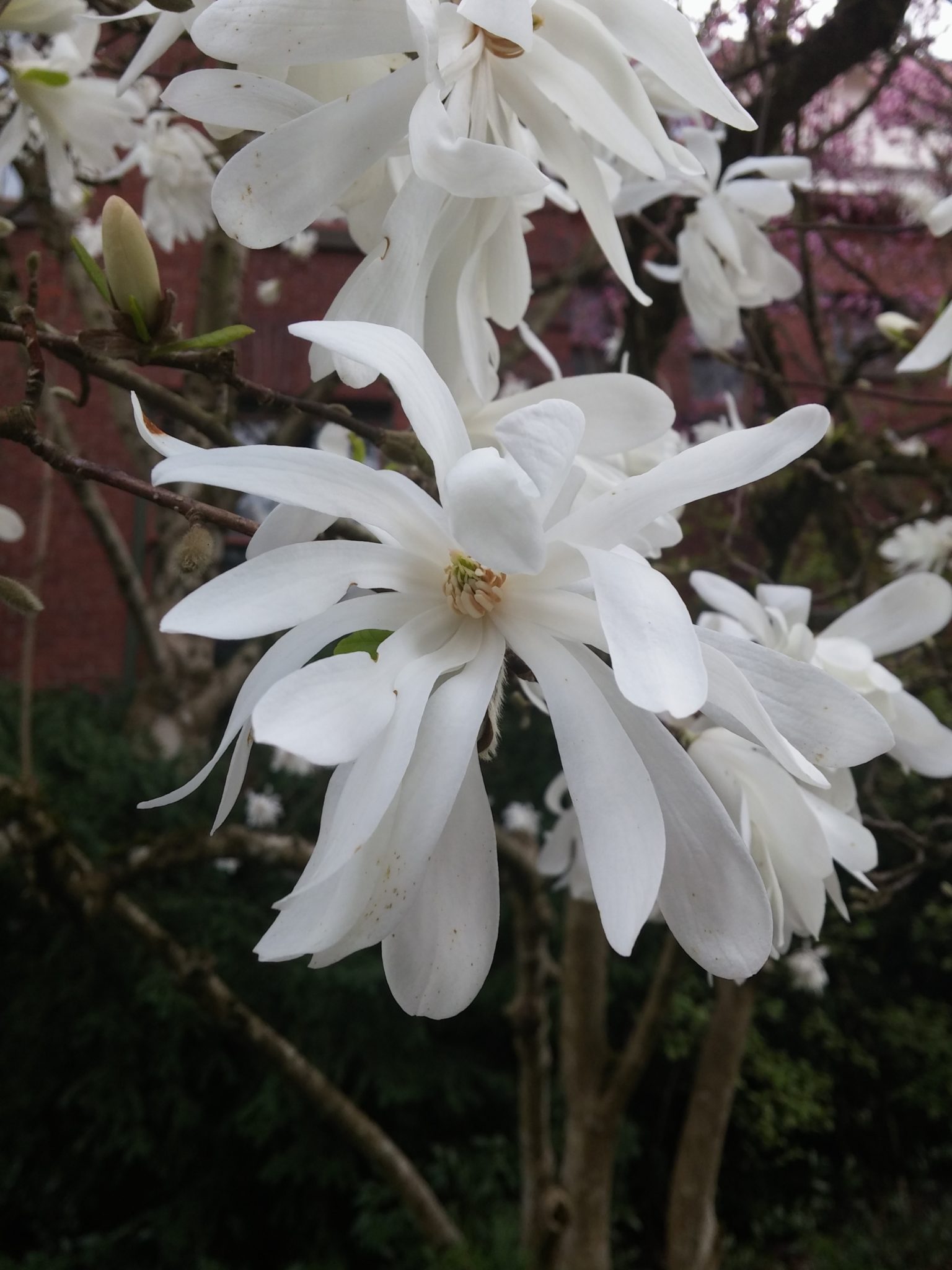
Tree Anatomy: Flowers
Spring in the Portland area is accented with explosions of color on flowering trees and shrubs such as the flowering cherry, flowering plum, magnolia, and camellia. These tell-tale signs of spring are not only beautiful, they function as the crucial reproductive system of the flowering plants (angiosperms).
In angiosperm reproduction, pollen is produced by the male organ and is transferred to the female organ for fertilization by wind, insects, birds or bats depending on the tree species in a process called pollination. The flowers house both the male (stamen) and the female (pistil) organs of reproduction, although not all flowers have both male and female organs. Although self-fertilization occurs in some plants, most are designed for cross-pollination with a different member of the same species, which prevents genetic inbreeding.
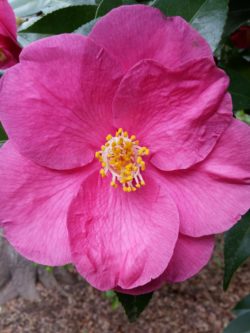
The stamen is made up of the pollen-producing anther and the filament, which supports the anther. In the camellia flower seen above, the male stamen is obvious. The white filament supports the bright yellow pollen on the anther.
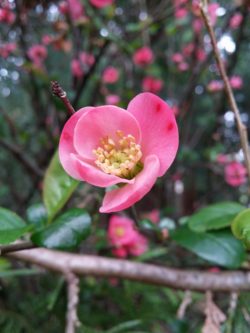
The pistil is made up of the stigma, style, and ovary. The fertilizing pollen lands on the sticky stigma, is transported down the tubular style and into the ovary where the ovaries are. The light green pistils of the flowering quince seen above are located in the center of the flower, encircled by stamen.
Once fertilization occurs, the ovary of the flower develops into a fruit containing the seed of the next generation of tree.
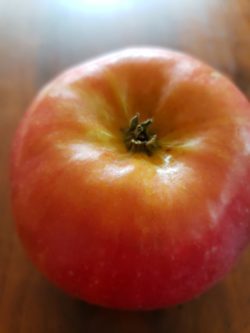
The floral origin of the ripe apple seen above is evident in the shriveled flower parts remaining at the bottom of the fruit.
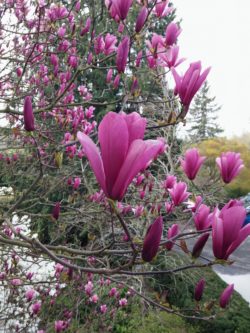
Most flower parts are designed to increase the chance of fertilization by the appropriate pollen. Petal color, markings and form, the location, timing and presentation of the pollen on the stamen and the architecture of the pistil are all subtly variant from one species to the next. While enjoying the breathtaking vision of floral color this spring, take the time to notice the magnificent architecture of the individual flower.


